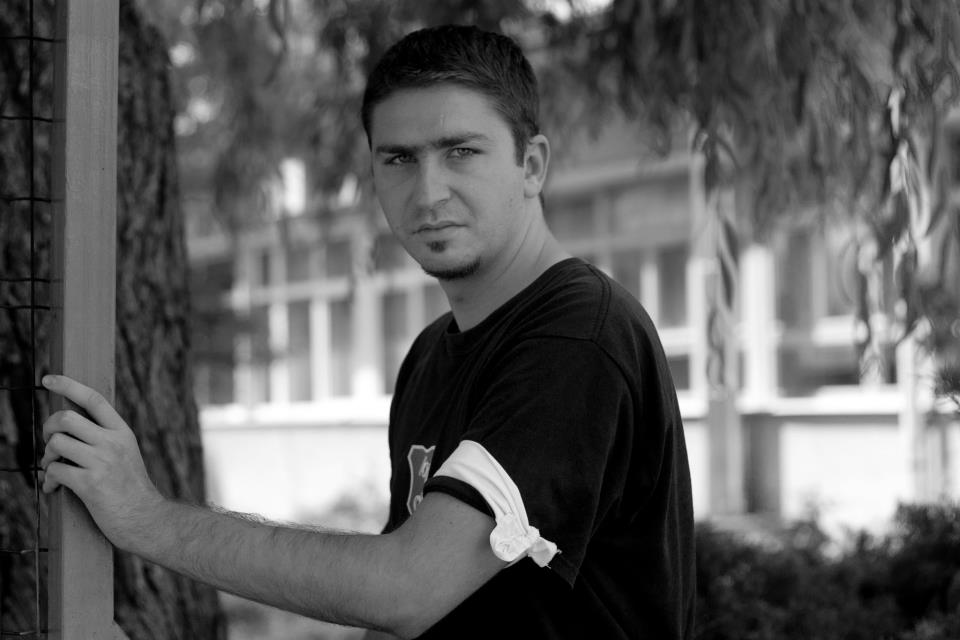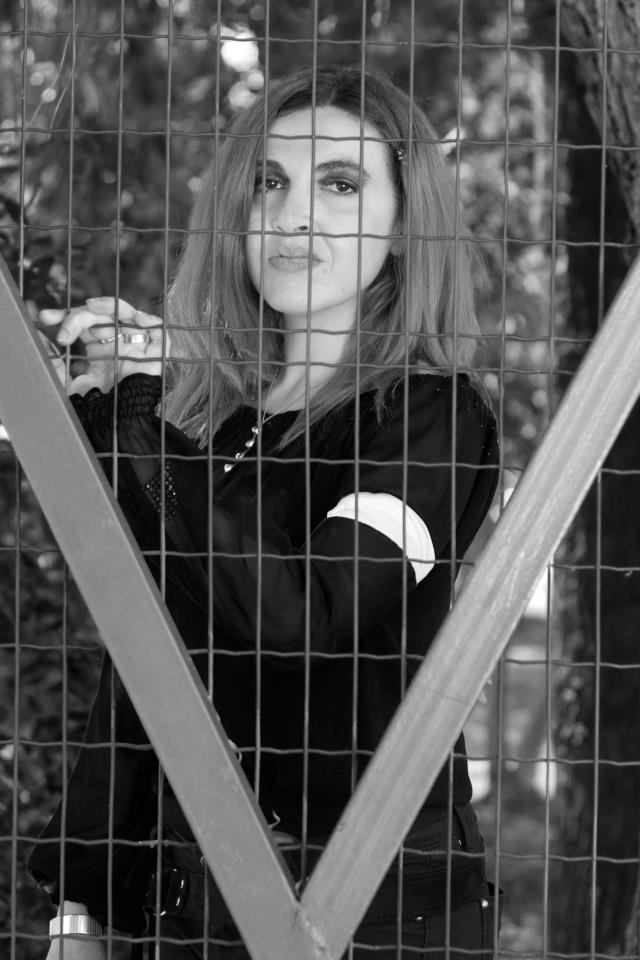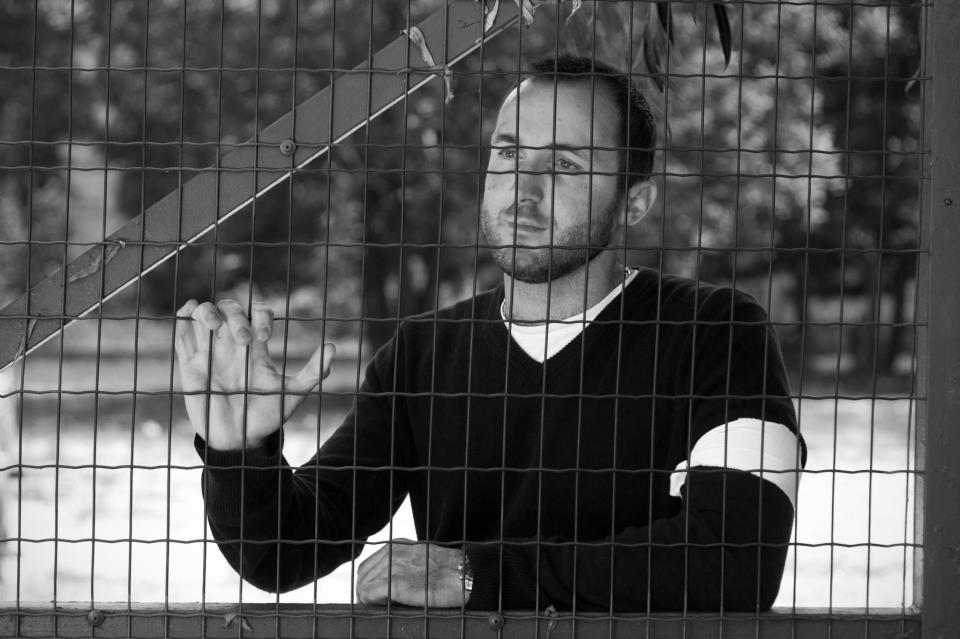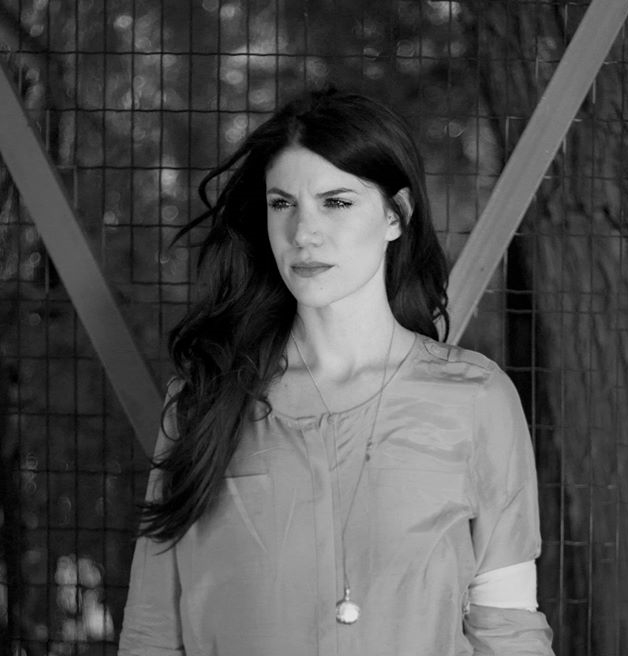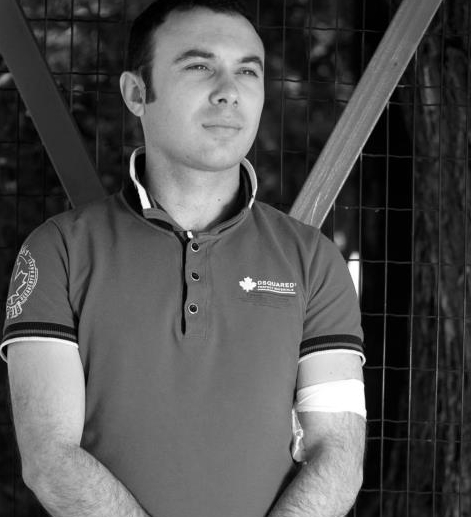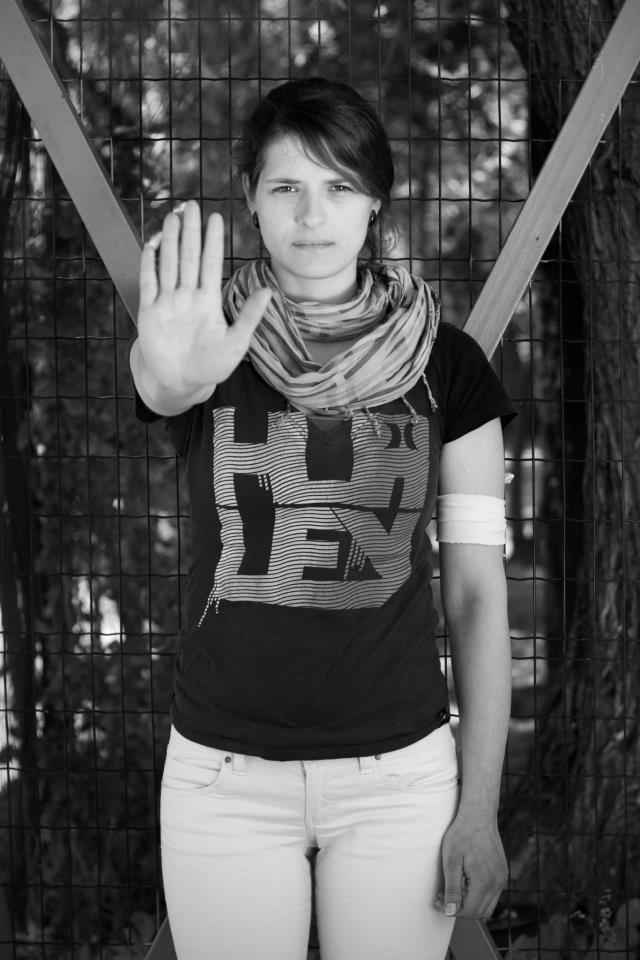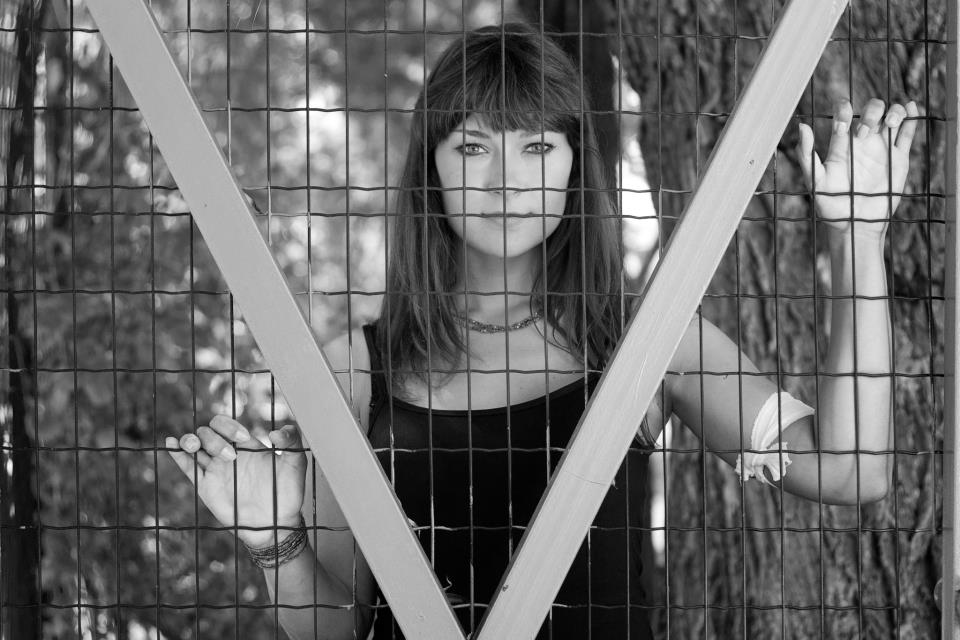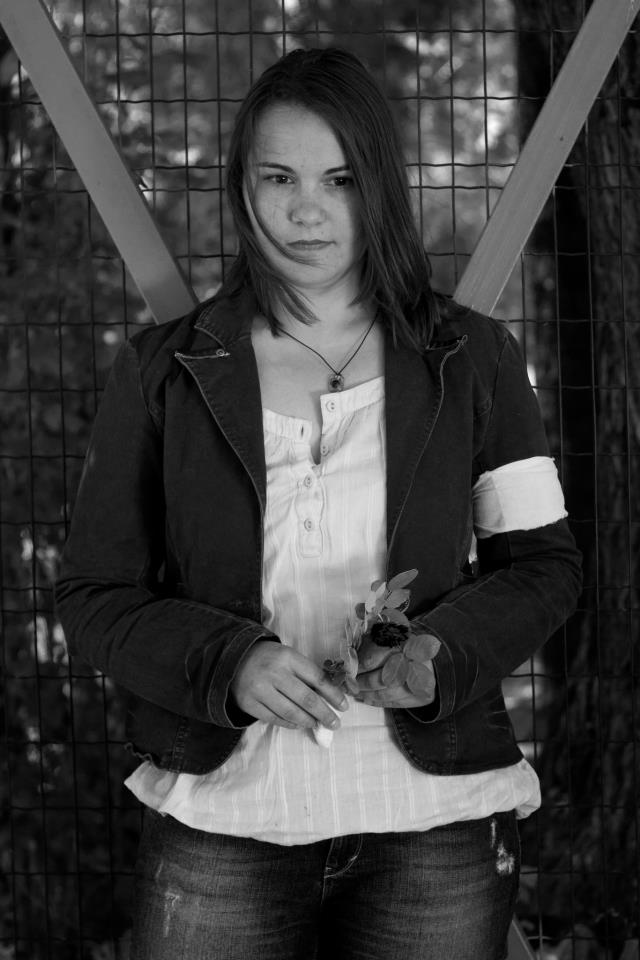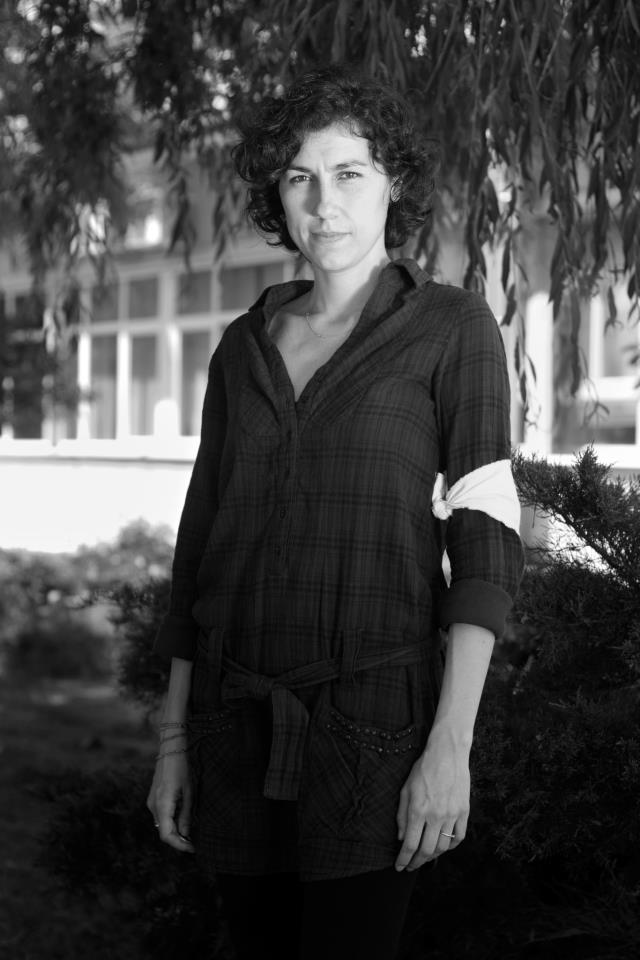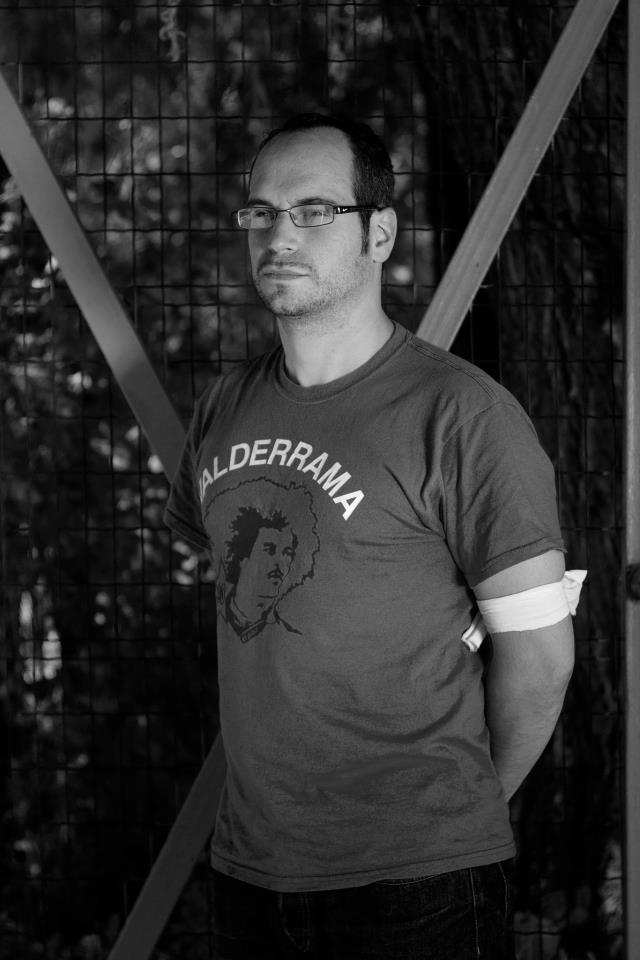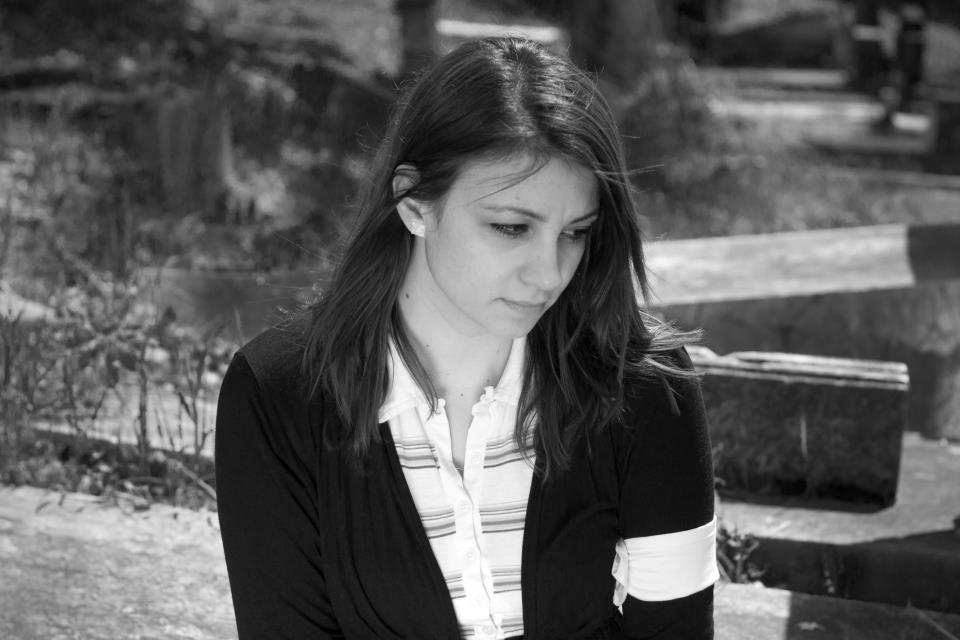By Ana Croegaert and Elmina Kulašić
The use of objects—including the body—to imbue meaning and communicate memory and identity is a longstanding area of anthropological scholarship (Verdery 1999, Appadurai 1986, Miller 2009). More recently, anthropologists have explored the use of objects in the inter-generational communication of trauma (Kidron 2009). In this post, we consider the relationship between memory and trauma through acts and objects explicitly aimed at memorializing traumatic events. We draw on our work with child survivors of the Yugoslav Secession war in Bosnia and Herzegovina (BiH) in 1992-95 and reflect on what we call these survivors’ politicized “memory work.” We argue that an anthropology of child survivors’ experiences sheds light on this diaspora’s critical role in postwar democracy in BiH. While our discussion centers on the Bosnian diaspora, the dynamics we explore here may offer insights that expand awareness of challenges in other post-conflict sites, situations, and diasporas.
The war in Bosnia was among a series of wars over the struggle for power in post-Cold War Yugoslavia during which half of Bosnia’s 4.5 million population were displaced and tens of thousands of women were raped (Croatia 1991-5; Bosnia 1992-5; Kosovo 1999-2000). Civilian deaths accounted for forty percent of the over 100,000 war-dead; nearly seventy percent of Muslim Bosnians who were killed during the war were civilians (Center for Justice and Accountability). Of the million people who fled the country as refugees, nearly 170,000 made it to the United States, with Chicago serving as the largest relocation site for Bosnian refugees outside of Europe. St. Louis, Missouri is now home to the largest Bosnian war diaspora population. According to the U.S. Department of Homeland Security, 169,000 refugees from former Yugoslavia were admitted between 1992-2012. The majority were Bosnian Muslims and Bosnians in mixed marriages who fled during the Bosnian War, along with some Muslim Kosovars. This number also includes those who sought asylum after Germany and Austria began forcibly repatriating Bosnians in 1999.
ENCOUNTERING A MEMORY-SCAPE
ANA: When I began my research on how Bosnian refugee-immigrants managed their forced relocation to Chicago, I was struck by the efforts of those in the 1.5 generation—who were children during the war and migration—to make sense of the war and to remain connected to Bosnia.[i] I was also troubled by the role of teenage girls in memorializing the Serb-allied Bosnian military’s genocide[ii] of more than 8,000 Bosnian Muslim men in the Srebrenica U.N.-declared “Safe Area” in July of 1995. Yet, I found it difficult to raise these concerns in the context of my fieldwork.[iii] Given the gender-dimensions of Islamophobia in the United States, public memorials often enlisted perceived “less-threatening” images and voices of young Bosnian women, rather than of young Bosnian men.[iv]
In July 2005, I attended one such event marking ten years since the genocide in Srebrenica in Chicago’s Daley Plaza in downtown Chicago.[v] The organizers set the stage and loud speakers to communicate with the lunchtime crowd. Some of us had been given green ribbons to tie around our arms to signify the victims as Muslim. Those of us gathered in the plaza were given a set of confusing directions—perhaps intended to reproduce the chaos during the actual massacre—to participate in a dramatic re-enactment of the ritualistic events leading up to the massacres. We were separated by gender, told to kneel and kiss the ground as an audio-recording of a barrage of gunfire blasted across loudspeakers. The elder Bosnian women whom I accompanied were shocked. One woman fainted.
Ten-year memorial of Srebrenica massacres at Daley Plaza in Chicago, 2005. Photo credit: A. Croegaert
Following the restaging of the genocide, 18-year-old Selma took the stage and relayed her memories as a seven-year-old, of dodging gunfire while playing with friends and hiding for weeks in a cave-like shelter with her mother and brother. She ended her story with the image of a phoenix rising from the ashes.
The memorial brought home for me the complex memory-scape that 1.5 generation youth traverse. They want to learn of their parents' experiences, while also navigating their own childhood memories. They want to be involved in supporting their parents, and people living in Bosnia. Yet they face numerous and competing narratives: Serb Bosnians who deny the genocide of Muslim Bosnians at Srebrenica, and at Prijedor; nationalistically centered groups like the one who staged this memorial; and their silent and depressed parents. Furthermore, the 1990s wartime massacres were layered upon the buried history of WWII-era massacres that were officially repressed during the Communist Era in the pursuit of the policy of national "Brotherhood and Unity".
Years later, Selma, then in her early twenties, told me that she was proud of her participation. Her father had encouraged her. And, she felt proactive. She contrasted her actions with her mother's constant depressive state and reluctance to discuss wartime events.
Wartime memories and how to memorialize these events in order to prevent future atrocities preoccupied another youth I met during my research: Elmina, co-author of this blog. The following is an excerpt of our conversation about her involvement in organizing a photoshoot commemorating May 31, 1992. On this day, all non-Serb residents of her town were ordered to mark their homes and businesses with white flags and their bodies with white armbands. Twenty years later, those who were forced to mark themselves in this way appropriated the white armband as a symbol of the violence they survived, and of those who had not.
WHITE ARMBAND CAMPAIGN
ANA: Elmina, why did you want to participate in this memorial?
ELMINA: The White Armband campaign commemorates May 31, 1992 when after a forceful and illegal takeover of the municipal government in the Municipality of Prijedor, the Bosnian Serb authorities issued a decree on local radio ordering all non-Serbs to mark their homes with white flags or bedsheets and to wear white armbands when leaving their homes. It was a direct and tangible marker of the “Other.”
At the beginning of the 1992-95 war in Bosnia, my hometown Kozarac in the municipality of Prijedor was attacked. I was seven years old at the time. The shelling lasted for over 24 hours. On May 25, 1992, all of the non-Serb residents, including my family and I were ordered to “surrender” and to march towards Mountain Kozara. The march was long and exhausting. I remember my father carrying my oldest disabled sister on his back the whole time.
Mount Kozara Forced March, 1992. Map credit: E. Kulasic via Google Earth, 2016.
It was a march that marked the horrors that awaited us. We slept at the mountain that night and early in the morning we were once again marched back to Kozarac. A high number of civilians were killed and many more wounded while the rest of us were directed towards nearby concentration camps that were established for the non-Serb population. My family and I were detained in the Trnopolje concentration camp.
I remember seeing white flags at some of the homes. At the time, I didn’t know what the white flags meant but I did hear whispers about it. The elderly were trying to protect us thinking that we would not hear them. I remember comments like: “They will not kill us; the white flags are visible.” After over a month of starvation, humiliation, killings, torture and constant fear, we were transferred from the Trnopolje concentration camp to refugee centers in Croatia and other countries that were taking in refugees at the time. The screams, stares and hunger left a number of invisible scars; scars that require a long time to heal and this is one of the reasons why commemorating and remembering is of utmost importance for survivors. It is one of the reasons why in 2012, twenty years later and the year I moved back to Bosnia, that the White Armband Campaign became so visible.
ANA: Why in 2012 and not before?
ELMINA: The answer is complex but also simple. Since the post-war agreement, Prijedor lies in the Serb Republic (RS) entity of Bosnia. The municipality is still governed by Serbs, many of whom continue to deny the massacres. In 2012, Bosnian Muslims who returned to memorialize the deaths of their family and friends were forbidden to publicly commemorate the events, to use the term “genocide,” or to visit the former concentration camps. The local authorities claimed that such a commemoration would tarnish the image of the city. After a number of meetings and rejected requests for a public commemoration, the returnees started an online campaign. Overnight, it became an international campaign in which people posted photos wearing a white armband to social media. The goal was to draw attention to the crimes committed in Prijedor and to commemorate the 20th anniversary.
Elmina at Old Jewish Cemetery, Sarajevo, 2012. Photo credit: R. Vrgova
At the time I was studying in Sarajevo and I wanted to be more directly engaged with the people from Prijedor and Kozarac. I talked about the white armband campaign with a Macedonian classmate and photographer, and together we developed the photo campaign to document the images of individuals wearing the white armband to bring awareness to the use of objects to identify the "Other."
I thought about my photo. I wanted to connect my experience in Kozarac, my refugee journey from Croatia to the United States, and then my return to Bosnia twenty years later. I wanted to depict my pain and my resilience. One image that recurred to me was a story that I learned about in 8th grade. It was a story about the Holocaust. Connecting my photo to the Holocaust was a way to connect these two dark histories of Europe and to draw parallels between the atrocities. I wanted to draw attention to the labeling of “Others” and the means used to identify and to kill innocent neighbors and friends. It was the reason why I took my photo at the Jewish Cemetery in Sarajevo.
I was nervous, wondering which of my classmates would participate, as some were from other narod/national groups and other parts of former Yugoslavia. However, those of us who were children during the war had a need to raise our voices against injustice both historic and in the present day. A Serb classmate of mine said to me:
"Elmina, I did not know. I knew about the David's Star [that Nazis forced Jews to wear during the Holocaust] but I did not know about the White Armband in Prijedor. It never even crossed my mind that my generation was marked in such a way and that I would be participating in raising awareness about it to make sure that it does not happen again."
This was the precise message that we intended the photo campaign to send. The participants included my classmates from the program who came from Serbia, Croatia, Montenegro, Albania, Macedonia, Bosnia, Russia, Georgia, France, UK, and the U.S. Since 2012, the White Armband Campaign is now an annual memorial event.
ERM class photo with white armbands, Sarajevo, 2012. Photo credit: ERMA, R. Vrgova
ANA: What sort of restrictions did you encounter when attempting to memorialize the war?
ELMINA: This photo exhibit was the first time that I have worked with individuals from the region who were my age and in the same educational program. My previous work included a number of exhibitions, documentaries, reports and projects; however, none was as interactive as the White Armband Campaign. One of the reasons is the fact that working on memorialization requires both patience and understanding, especially when working directly with survivors. I have found that working with survivors requires a lot of time to carefully and thoughtfully understand the specific locations, histories, and crimes. With the 1.5 generation, my generation, which seeks to document the crimes and memories in order to reckon with the past, it is challenging to remember one’s own story while trying to objectively commemorate the past. Nonetheless, it is also one of the reasons why the 1.5 generation is the key to a peaceful future- this generation remembers Bosnia before the war, they have survived the war and they are the ones who have felt the consequences of war and understand why peace must prevail.
The differences are also reflected in tensions within Bosnian society, where international donors and NGOs want to focus on reconciliation and where ethno-centric and nationalistic political parties evoke the war and fear to shore up their voting base. The call to “move on”, in a way, contributed to the overall situation in Prijedor where survivors and returnees were forbidden to commemorate the 20th anniversary. For this reason, the photo campaign was so powerful--the images of wearing the armband are tangible reminders that the past is not really in the past. That it is a shadow, a painful invisible scar, lingering over Bosnia reminding all of us that a local approach to raising awareness is a concrete model for reconciliation.
REFLECTIONS
Organized twenty years after the war, these two memorial events illustrate how memory is embodied, reworked and transmitted through materiality. These memorials demonstrate how the local is always embedded in the transnational—or what some refer to as “translocal”—when populations are forcibly displaced and globally dispersed, and external polities are involved in “state-building” (Fisher 1997).
While the Chicago 2005 memorial relied on Selma’s iconic young female survivor status to publicly mark the Srebrenica genocide, the 2012 social media armband campaign that Elmina participated in emphasized local, regional, and diasporan generational solidarity. By engaging social media to challenge the local municipal government’s denial of the Prijedor massacres, the White Armband Campaign opens up a series of questions about the role the 1.5 diaspora will play in the future of the Bosnian state: How might generational status shape survivors’ political stances toward the postwar state? How do youth diasporans define justice, and what degrees of significance do they assign to justice in relation to their daily lives? What objects are involved in communicating acts of injustice and how are the symbolic meanings of these objects reproduced—and changed—across time and space? We argue for a sustained awareness of and attention to young people’s varied experiences of forced migration and wartime violence, and to how they represent, depict, and reflect upon these experiences. Their perspectives and voices are central to how the Bosnian War is re-membered, and are integral to social wellbeing and stability in the postwar state.
White Armband Campaign participants. All photos credited to R. Vargova, 2012.
ABOUT THE AUTORS
Ana Croegaert is an Assistant Professor of Anthropology at the University of New Orleans. She explores political dimensions of migration and urban change, with particular attention to the intersections of race & ethnicity, gender, and class in shaping people’s senses of belonging. She is especially interested in people’s efforts to use story and visual culture to adapt space, and to alter their circumstances. Her publications can be found in American Anthropologist and North American Dialogue, among other journals and anthologies, and she is the project director of Gathering Grounds, an ongoing public anthropology project. She has a PhD in Anthropology from Northwestern University.
Elmina Kulašić, a recent returnee to Bosnia from Chicago (United States), works on genocide prevention, human rights, and democracy and public policy issues, with experience in the United States, and in Southeast Europe. Elmina holds two Master’s Degrees: an M.A. in Public Policy from the Central European University with a focus on ethnic lobbying of the European Union and the role of regional representation; and a second M.A. in Human Rights and Democracy from the University of Bologna and the University of Sarajevo with a focus on transitional justice education in the Balkan region, especially in Macedonia and Bosnia and Herzegovina (BiH). She is the former Executive Director of the Advisory Council for BiH, Washington, D.C., and has interned at then-Senator (IL) Barack Obama’s district office, and Senator (IL) Richard Durbin’s district office.
Elmina has extensive public policy, education, and advocacy experience in the United States and in Europe, including: the Genocide Film Library, the 2008 Srebrenica Commemoration event on Capitol Hill, Prijedor: Lives from the Bosnian Genocide exhibit, 2012 Srebrenica commemoration event in Skopje, Macedonia, and the Višegrad Genocide Memories exhibit in Budapest. She is currently the Senior Advisor at the Victims and Witnesses of Genocide Association, Sarajevo, and founder of Bridges for the Future Association.
NOTES
[i] See Gonzales and Chavez 2012 for argument to explore the experiences of 1.5- generation as a distinct migrant cohort in the United States. See Croegaert (2015 and 2010) and Gathering Grounds book manuscript (n.d.) for discussion of Bosnian 1.5 generation in the United States.
[ii] We use the word “genocide” here in keeping with the International Criminal Court (ICJ) and the International Criminal Tribunal for the former Yugoslavia (ICTY) findings in the case of Srebrenica, and because survivors use this term. At the same time, we recognize the limits of the term. “Genocide” developed during the age of the early twentieth century construction of “race” and is thus linked to processes of racialization (the social beliefs and practices involved in the reproduction and transformation of existing racial categories and identities). While the term has been central to establishing legal criteria for the prosecution of individuals for the massive, organized, condensed slaughter of a group of people—a significant milestone in helping to achieve some sense of justice for survivors at the international and local levels—“genocide” simultaneously reproduces the fiction of “race”. We do not enter into the problematics of this phenomenon here. However, we want to create awareness of how unreflexive use of the term may, ironically, reproduce the fiction of racialized biological and cultural differences on which the wartime project of “ethnic cleansing” centered. See R. Hayden 2008 in for critical discussion of the Srebrenica genocide, and D. Stone, ed. 2008 for historiography of genocide.
[iii] Men were more often killed outright, while women—Muslim women in particular—were targets of sexual violence. The United Nations estimates that as many as 60,000 women were victims of wartime rape (see D. Žarkov 2007 for critical discussion). Despite the ICTY (International Criminal Tribunal for the former Yugoslavia) holding the first ever trial charging rape as a war crime, there is scant public recognition of this gendered violence. While I documented multiple memorials to the thousands of men massacred during the wars, the only public recognition of wartime rape I witnessed was at an event held on Capitol Hill organized by my co-author Elmina on International Women's Day in 2009, and by Bosnian writer Aleksandar Hemon at a 2010 memorial in Chicago.
[iv] Bosniaks are Bosnian Muslims who trace their conversion to Islam to 15th c. Ottoman occupation and subsequent administration of Bosnia (Sorabji 1988). See Hromadžić (2012) for an in-depth discussion of Yugoslav-era racial/ethnic categories including narodi, narodnosti, etnicke grupe.
[v] The International Court of Justice (ICJ) has ruled that genocide was committed in Srebrenica in July of 1995 Radislav Krstić was the first person to be convicted of genocide in Srebrenica at the International Criminal Tribunal for former Yugoslavia (ICTY). Radovan Karadžić was convicted of genocide in Srebrenica.





